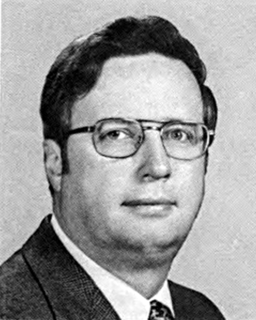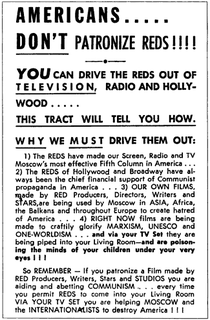
The Pennsylvania gubernatorial election of 2006 was held on November 7, 2006 and included the races for the Governor of Pennsylvania and Lieutenant Governor of Pennsylvania.
The Republican Party of Pennsylvania, commonly known as the PA GOP, is based in Harrisburg in the United States state of Pennsylvania. It is affiliated with the Republican Party of the United States.

The 1878 South Carolina gubernatorial election was held on November 5, 1878 to select the governor of the state of South Carolina. Wade Hampton III was renominated by the Democrats and ran against no organized opposition in the general election to win reelection for a second two-year term.

The 2002 Maryland gubernatorial election was held on November 5, 2002. Democratic Governor Parris Glendening was term-limited and could not seek a third term. Republican Bob Ehrlich defeated Democrat Kathleen Kennedy Townsend, making him the first Republican governor of Maryland since Spiro Agnew in 1966. This was the last time Charles County voted Republican for any office.

The Pennsylvania gubernatorial election of 2002 was held on November 5, 2002, and included the races for the governor and lieutenant governor of Pennsylvania. Incumbent Republican Governor Mark Schweiker, who became Governor in 2001 when Tom Ridge resigned to become Homeland Security Advisor, was eligible to run for a full term, but did not do so. Democrat Ed Rendell, the former Mayor of Philadelphia and Chairman of the Democratic National Committee, emerged from a competitive primary to win the general election against Republican Pennsylvania Attorney General Mike Fisher.

The Pennsylvania Gubernatorial election of 1998 was held on November 3, 1998. It was between incumbent Republican Tom Ridge, Democrat Ivan Itkin, Constitutionalist Peg Luksik and Libertarian Ken Krawchuk. Ridge, a popular moderate, won with 57% of the votes cast.

The Pennsylvania gubernatorial election of 1994 was held on November 8, 1994. The incumbent governor, Bob Casey, Sr. (Democrat), was barred from seeking a third term by the state constitution. The Republican Party nominated Congressman Tom Ridge, while the Democrats nominated Mark Singel, Casey's lieutenant governor. Ridge went on to win the race with 45% of the vote. Singel finished with 39%, and Constitution Party candidate Peg Luksik finished third, garnering 12% of the vote.

The 1998 United States Senate election in Pennsylvania was held November 3, 1998. Incumbent Republican U.S. Senator Arlen Specter won re-election to a fourth term.

The Pennsylvania Gubernatorial election of 1990 was held on November 6, 1990. Incumbent Democratic Robert P. Casey easily defeated Republican Barbara Hafer. Governor Casey defeated Ms. Hafer by a margin of 35.29%, and carried 66 out of 67 Pennsylvania counties.

The Pennsylvania Gubernatorial election of 1986 was held on November 4, 1986. Democrat Bob Casey narrowly defeated Republican Bill Scranton III, in a race that featured two very high-profile candidates.

The Pennsylvania gubernatorial election of 1982 was held on November 2, 1982 between incumbent Republican Dick Thornburgh and Democratic U.S. Congressman Allen E. Ertel.

The Pennsylvania gubernatorial election of 1978 was held on November 7, 1978 between Republican Dick Thornburgh and Democrat Pete Flaherty.

The Pennsylvania gubernatorial election of 1974 was held on November 5. Incumbent Democratic Governor Milton Shapp defeated Republican Drew Lewis. Under the state's 1968 constitution, Shapp was the first governor who was eligible to run for consecutive terms.

The Pennsylvania gubernatorial election of 1970 was held on November 3. Democrat Milton Shapp challenged incumbent Republican Lieutenant Governor Ray Broderick.

The Pennsylvania gubernatorial of 1860 was held on October 9, almost one month before Presidential election. Andrew Curtin of the newly formed Republican Party won the governor's mansion over Democrat Henry Donnel Foster.

The Pennsylvania gubernatorial election of 1966 was held on November 8. Republican Ray Shafer, the state's incumbent Lieutenant Governor, was elected to the state's highest office after holding off a charge from future governor Milton Shapp.

The Pennsylvania gubernatorial election of 1962 was held on November 6. Republican Bill Scranton and Democrat Richardson Dilworth, each a member of a powerful political family, faced off in a bitter campaign.

The Pennsylvania gubernatorial election of 1958 was held on November 4. Democrat David Lawrence defeated Republican Art McGonigle by a smaller than anticipated margin.

The Pennsylvania gubernatorial election of 1950 was held on November 7. For the twenty-second time in twenty-five elections, the Republican candidate was victorious, but by a much smaller than usual margin. Superior Court Judge John S. Fine defeated Democrat Richardson Dilworth, the City Controller of Philadelphia.

The 1998 Florida Gubernatorial Election was held on November 3, 1998 to determine the Governor for the State of Florida. Two-term Democratic incumbent Governor Lawton Chiles was term-limited and could not run for re-election. John Ellis "Jeb" Bush, who had previously run for governor in 1994 was the Republican nominee, and incumbent Lieutenant Governor Kenneth Hood "Buddy" MacKay was the Democratic nominee. Bush defeated MacKay by nearly 11% of the vote, and won his first of two terms as governor.




























